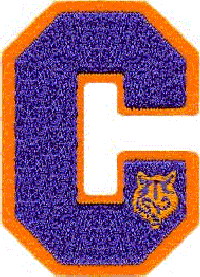The Cub Scouts Sports and Academic Program is one method of addressing the third aim of
Scouting: the development of physical, mental and emotional fitness. Fitness includes the
body (well-tuned and healthy), the mind (able to think and solve problems), and the
emotions (self-control, courage, and self-respect). As in most activities in Cub Scouting,
this is not meant to be a highly competitive program, instead, the boys are encouraged to DO
THEIR BEST.The
Sports and Academic Program is an
optional program for all Cub Scouts. It is not part of the normal requirements towards
ranks (except were used in obtaining the Webelos Sportsman and Athlete activity badges).
Its purpose is to assist the Scouts in learning a new skill, or improving one they already
posses.
Loops, pins, letters can be are earned by Wolves,
Bears
and Webelos.
Complete details on using the sports program are contained in the the
Leader Guide for Cub Scouts Sports and Academics..
Recognition:
 Return
to the TOP of the page Return
to the TOP of the page
The Cub Scout Belt Loops are worn on the navy blue Cub Scout belt.
They will not fit on the khaki (olive) Boy Scout / Webelos belt. Webelos may continue to
wear the blue belt on their uniforms.
The same belt loop may be earned once within each rank.
A loop is earned by the Cub doing his best to learn about the things
in the book and by investigating the subject area in practice or in play with his den or
community or as an individual working with an adult.
Individual Academic
Belt Loop Requirements give instructions in the basic skills and list
the requirements.
 Return
to the TOP of the page Return
to the TOP of the page
The Cub Scout Academic Pins are worn on civilian clothes only.
Academic pins are given in each subject (see Academic
Belt Loops) for Cub Scouts and adults to recognize academic development over a three
month period. Many of the academic pins require the same "30-60-90" requirement
as the sports pins (see Sports Pins for details), others require a
project to be completed.
Individual Academic
Pin Requirements give instructions in the basic skills and list the
requirements.
 Return
to the TOP of the page Return
to the TOP of the page
Cub Scout Academic Letters are worn on sweater or jacket.
Academic letters are for Cub Scouts who earn both the belt loop and
pin and involve an adult teammate in earning an
academic pin.
Individual Academic
Letter Requirements give instructions in the basic skills and list the
requirements. There is information also in the Leader Guide for Cub
Scouts Sports and Academics.
 Return
to the TOP of the page Return
to the TOP of the page
Requirements: Academic Awards
Art, Chess,
Citizenship,
Communicating, Computers,
Geography, Heritages,
Mathematics, Music,
Science,
Weather, Wildlife
Conservation
New in 2002: Astronomy,
Collecting, Language and Culture,
Geology, and Map and
Compass, were added.
Belt Loop

Complete these three requirements:
- Make a list of common materials used to create visual art
compositions.
- Demonstrate how six of the following elements of design are used in a
drawing: lines, circles, dots, shapes, colors, patterns, textures, space,
balance, or perspective.
- Identify the three primary colors and the three secondary colors that
can be made by mixing them. Show how this is done using paints or markers.
Use the primary and secondary colors to create a painting
Academics Pin

Earn the Art belt loop, and complete six of the following
requirements:
- Visit an art museum, gallery, or exhibit. Discuss with an adult the
art you saw.
- Create two self-portraits using two different art techniques, such as
drawing, painting, printmaking, sculpture, or computer illustration.
- Demonstrate how to make paper. Make a sample at least 4 inches by 4
inches.
- Make a simple silkscreen or stencil. Print a card or T-shirt.
- Create a freestanding sculpture or mobile using wood, metal, soap,
papier-mâché, or found objects.
- Create an object using clay that can be fired, baked in the oven, or
hardened in water.
- Photograph four subjects in one theme, such as landscapes, people,
animals, sports, or buildings.
- Make a collage using several different materials.
- Use your artistic skills to create a postage stamp, book cover, or
music CD cover.
- Use a computer illustration or painting program to create a work of
art.
- Display your artwork in a pack, school, or community art show.
 Return
to the TOP of the page Return
to the TOP of the page
Belt Loop

Complete these three requirements:
- Set up and demonstrate how to focus a simple telescope or binoculars.
- Draw a diagram of our solar system--identify the planets and other
objects.
- Explain the following terms: planet, star, solar system, galaxy, the
Milky Way, black hole, red giant, white dwarf, comet, meteor, moon,
asteroid, and universe.
Astronomy Pin

Earn the Astronomy belt loop, and complete five of the following
requirements:
- Draw a diagram of a telescope and explain how it works.
- Locate and identify five constellations. You may use a telescope.
- Using a telescope, find at least one planet and identify it.
- Find the North Star. Explain its importance.
- Interview an astronomer. Learn about careers that relate to Astronomy.
What school subjects will help you get a job in astronomy?
- Visit an observatory or a planetarium. Give a report on what you
learned to your den.
- Make a poster illustrating the different kinds of stars. Include a
diagram showing the life cycle of a star.
- Learn about some of the early space missions. Tell your den or family
about one of them.
- Find a current event about a recent happening related to space. Tell
your den or family about this event.
- Make a chart to show the phases of the moon over a two-month period.
Define a blue moon.
- Write a report on two famous astronomers.
- Locate three major observatories on a map. Explain why these locations
are good for astronomy.
 Return
to the TOP of the page Return
to the TOP of the page
Belt Loop

Complete these three requirements:
- Identify the chess pieces and set up a chess board for play.
- Demonstrate the moves of each chess piece to your den leader or adult
partner.
- Play a game of chess.
Academics Pin

Earn the Chess belt loop, and complete five of the following
requirements:
- Demonstrate basic opening principles (such as development of pieces,
control center, castle, don't bring queen out too early, don't move same
piece twice).
- Visit a chess tournament and tell your den about it.
- Participate in a pack, school, or community chess tournament.
- Solve a pre-specified chess problem (e.g., "White to move and mate in
three") given to you by your adult partner.
- Play five games of chess.
- Play 10 chess games via computer or on the Internet.
- Read about a famous chess player.
- Describe U.S. Chess Federation ratings for chess players.
- Learn to write chess notation and record a game with another Scout.
- Present a report about the history of chess to your den or family.
 Return
to the TOP of the page Return
to the TOP of the page
Belt Loop
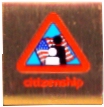
Complete these three requirements:
- Develop a list of jobs you can do around the home. Chart your progress
for one week.
- Make a poster showing things that you can do be a good citizen.
- Participate in a family, den, or school service project.
Academics Pin

Earn the Citizenship belt loop, and complete five of the
following requirements:
- Interview someone who has become a naturalized citizen. Give a report
of your interview to your den or family.
- Write a letter to your newspaper about an issue that concerns you.
- Create a collage about America.
- Conduct a home safety or energy audit and inspect your home. Talk with
your parent or adult partner about correcting any problems you find.
- Visit your local site of government. Interview someone who is involved
with the governmental process.
- Visit a court room and talk with someone who works there.
- Go to the polls with your parents when they vote. Talk to them about
their choices.
- Take part in a parade with your den or pack.
- List ways you can recycle various materials and conserve and protect
the environment.
- Attend a community event or visit a landmark in your community.
 Return
to the TOP of the page Return
to the TOP of the page
Belt Loop
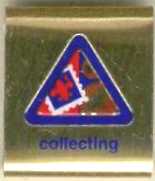
Complete these three requirements:
- Begin a collection of at least 10 items that all have something in
common. Label the items and title your collection.
- Display your collection at a pack or den meeting.
- Visit a show or museum that displays different collections
Collecting Pin

Earn the Collecting belt loop, and complete five of the following
requirements:
- Give a talk about your collection to someone other than your family.
Give a description of your collection, including a short history. Explain
how you got started and why you decided to collect what you do.
- Show how you preserve and display your collection. Explain any special
precautions you must take including handling, cleaning, and storage. Note
precautions for dampness, sunlight, or other weather conditions.
- Read a book about what you collect.
- Start a new collection of at least 20 items. Label the items, and
title your collection.
- Define numismatics and philately.
- Join a club of collectors who share your hobby. This club may be a
group of your friends.
- Find out if there is a career that involves what you collect. Find out
what kind of subjects you need to study to prepare for such a career.
- If you collect coins or stamps, make a list of different countries in
your collection. Explain how to identify each country's issues. Make a
list of "clues" that help you identify the origin.
- With an adult partner, visit an online auction and look for items you
collect. What does it tell you about rarity and value of the things you
collect?
- Use a computer to catalog, organize, and keep track of your
collection.
- Help a friend get started on a collection of his or her own.
 Return
to the TOP of the page Return
to the TOP of the page
Belt Loop
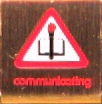
Complete these three requirements:
- Tell a story or relate an incident to a group of people, such as your
family, den, or members of your class.
- Write a letter to a friend or relative.
- Make a poster about something that interests you. Explain the poster
to your den.
Academics Pin

Earn the Communicating belt loop, and complete five of the
following requirements:
- Write an original poem or story.
- Keep a journal of daily activities for at least seven days.
- Listen to a news story on television or the radio. Discuss the
information with an adult.
- Go to the library. Use the card catalog or computer reference system
to find a book, and then check it out.
- Read a book that has been approved by your parent or teacher. Discuss
the book with an adult.
- With a friend, develop a skit. Perform it at a Scout meeting, family
meeting, or school event.
- Learn the alphabet in sign language. Learn how to sign 10 words.
- With an adult, use the Internet to search for information on a topic
of interest to you.
- Watch three television commercials and discuss the information in them
with your parent or den leader.
- Read the directions for a new game. Explain to a family member or
friend how to play it.
- Learn about "reading" materials for people who have poor vision or who
are blind.
- While traveling, make a list of road signs, animals, or license plates
that you see.
 Return
to the TOP of the page Return
to the TOP of the page
Belt Loop

Complete these three requirements:
- Explain these parts of a personal computer: central processing unit
(CPU), monitor, keyboard, mouse, modem, and printer.
- Demonstrate how to start up and shut down a personal computer
properly.
- Use your computer to prepare and print a document.
Academics Pin

Earn the Computers belt loop, and complete five of the following
requirements:
- Use a computer to prepare a report on a subject of interest to you.
Share it with your den.
- Make a list of 10 devices that can be found in the home that use a
computer chip to function.
- Use a computer to maintain a balance sheet of your earnings or
allowance for four weeks.
- Use a spreadsheet program to organize some information.
- Use an illustration, drawing, or painting program to create a picture.
- Use a computer to prepare a thank-you letter to someone.
- Log on to the Internet. Visit the Boy Scouts of America homepage
(http://www.scouting.org).
- Discuss personal safety rules you should pay attention to while using
the Internet.
- Practice a new computer game for two weeks. Demonstrate an improvement
in your scores.
- Correspond with a friend via e-mail. Have at least five e-mail replies
from your friend.
- Visit a local business or government agency that uses a mainframe
computer to handle its business. Explain how computers save the company
time and money in carrying out its work.
 Return
to the TOP of the page Return
to the TOP of the page
Belt Loop

Complete these three requirements:
- Draw a map of your neighborhood. Show natural and manmade features.
Include a key or legend of map symbols.
- Learn about the physical geography of your community. Identify the
major landforms within 100 miles. Discuss with an adult what you learned.
- Use a world globe or map to locate the continents, the oceans, the
equator, and the northern and southern hemispheres. Learn how longitude
and latitude lines are used to locate a site.
Academics Pin

Earn the Geography belt loop, and complete five of the following
requirements:
- Make a three-dimensional model of an imaginary place. Include five
different landforms, such as mountains, valleys, lakes, deltas, rivers,
buttes, plateaus, basins, and plains.
- List 10 cities around the world. Calculate the time it is in each city
when it is noon in your town.
- Find the company's location on the wrapper or label of 10 products
used in your home, such as food, clothing, toys, and appliances. Use a
world map or atlas to find each location.
- On a map, trace the routes of some famous explorers. Show the map to
your den or family.
- On a United States or world map, mark where your family members and
ancestors were born.
- Keep a map record of the travels of your favorite professional sports
team for one month.
- Read a book (fiction or nonfiction) in which geography plays an
important part.
- Take part in a geography bee or fair in your pack, school, or
community.
- Choose a country in the world and make a travel poster for it.
- Play a geography-based board game or computer game. Tell an adult some
facts you learned about a place that was part of the game.
- Draw or make a map of your state. Include rivers, mountain ranges,
state parks, and cities. Include a key or legend of map symbols.
 Return
to the TOP of the page Return
to the TOP of the page
Belt Loop

Complete these three requirements:
- Define geology.
- Collect a sample of igneous, sedimentary, and metamorphic rocks.
Explain how each was formed.
- Explain the difference between a rock and a mineral.
Academics Pin
Earn the Geology belt loop, and complete five of the following
requirements:
- Make a plaster cast of a fossil.
- Make a special collection of rocks and minerals that illustrates the
hardness scale.
- Give examples of sedimentary, igneous, and metamorphic rocks.
- Gather several different types of rocks. Compare them and put them in
groups according to physical properties such as color, texture, luster,
hardness, or crystals.
- Describe the effects of wind, water, and ice on the landscape.
- Make "pet rocks" using rocks, paint, and glue-on eyes. Tell a creative
story about your pet rocks.
- Draw a diagram showing different types of volcanoes or draw a diagram
that labels the different parts of a volcano.
- Make a crystal garden.
- Make a collection of five different fossils and identify them to the
best of your ability.
- Make a poster or display showing 10 everyday products that contain or
use rocks or minerals.
- Visit a mine, oil or gas field, gravel pit, stone quarry, or similar
area of special interest related to geology.
- Visit with a geologist. Find out how he or she prepared for the job.
Discuss other careers related to geology.
- Draw the inside of a cave showing the difference between stalactites
and stalagmites.
 Return
to the TOP of the page Return
to the TOP of the page
Belt Loop
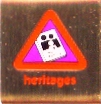
Complete these three requirements:
- Talk with members of your family about your family heritage: its
history, traditions, and culture.
- Make a poster that shows the origins of your ancestors. Share it with
your den or other group.
- Draw a family tree showing members of your family for three
generations.
Academics Pin

Earn the Heritages belt loop, and complete five of the following
requirements:
- Participate in a pack heritage celebration in which Cub Scouts give
presentations about their family heritage.
- Attend a family reunion.
- Correspond with a pen pal from another country. Find out how his or
her heritage is different from yours.
- Learn 20 words in a language other than your native language.
- Interview a grandparent or other family elder about what it was like
when he or she was growing up.
- Work with a parent or adult partner to organize family photographs in
a photo album.
- Visit a genealogy library and talk with the librarian about how to
trace family records. Variation:- Access a genealogy Web site and
learn how to use it to find out information about ancestors.
- Make an article of clothing, a toy, or a tool that your ancestors
used. Show it to your den.
- Help your parent or adult partner prepare one of your family's
traditional food dishes.
- Learn about the origin of your first, middle, or last name.
 Return
to the TOP of the page Return
to the TOP of the page
Belt Loop
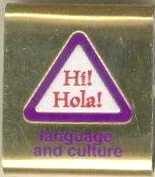
Complete these three requirements:
- Talk with someone who grew up in a different country than you did.
Find out what it was like and how it is different from your experience.
- Learn 10 words that are in a different language than your own.
- Play two games that originated in another country or culture.
Language and Culture Pin
Earn the Language and Culture belt loop, and complete seven of
the following requirements:
- Earn the
BSA
Interpreter Strip.
- Write the numbers 1-10 in Chinese or another number system other than
the one we normally use (we use the Arabic system).
- Visit an embassy, consulate, or charge d'affairs for another country.
- Make a display of stamps or postcards of another country. Explain the
importance or symbolism of the things depicted to that country's culture.
- Learn 30 words in a language other than your own.
- Learn a song in another country's language.
- Say five words in American Sign Language. One of these words could be
your first name.
- Visit a restaurant that specializes in recipes from another country.
- Watch a TV show or movie in a foreign language. Tell how easy or
difficult it was to understand what was happening.
- Interview an interpreter. Find out what his or her job is like.
- Make a list of 30 things around your home that were made in another
country.
- Read a book or story about an immigrant to the United States.
 Return
to the TOP of the page Return
to the TOP of the page
Belt Loop
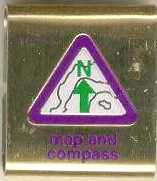
Complete these three requirements:
- Show how to orient a map. Find three landmarks on the map
- Explain how a compass works.
- Draw a map of your neighborhood. Label the streets and plot the route
you take to get to a place that you often visit.
Map and Compass Pin
Earn the Map and Compass belt loop, and complete five of the
following requirements:
- Define cartography.
- Make a poster showing 10 map symbols and their meaning.
- Read a book or story about a famous explorer or navigator. Tell your
den or family what you learned.
- Make a simple compass with a magnet and pin.
- Explain the difference between latitude and longitude and show them on
a map or globe.
- Draw a compass rose for a map. Label north, south, east, and west.
- Study a blank map of the United States of America. Label your state,
and the states that share its boundary lines.
- In the field, show how to take a compass bearing and how to follow it.
- Show how to measure distances, using a scale on a map legend.
- Measure your pace. Then layout a simple compass course for your den to
try.
- Using a road map, determine how many miles it is between two major
cities or familiar destinations.
- Explain what the different map colors can mean on a map.
 Return
to the TOP of the page Return
to the TOP of the page
Belt Loop

Complete these three requirements:
- Do five activities within your home or school that require the use of
mathematics. Explain to your den how you used everyday math.
- Keep track of the money you earn and spend for three weeks.
- Measure five items using both metric and non-metric measures. Find out
about the history of the metric system of measurement.
Academics Pin

Earn the Mathematics belt loop, and complete one from each of the
five areas below:
- Geometry is related to measurement but also deals
with objects and positions in space.
- Many objects can be recognized by their distinctive shapes: a tree,
a piece of broccoli, a violin. Collect 12 items that can be recognized,
classified, and labeled by their distinctive shape or outline.
- Select a single shape or figure. Observe the world around you for at
least a week and keep a record of where you see this shape or figure and
how it is used.
- Study geometry in architecture by exploring your neighborhood or
community. Look at different types of buildings-houses, churches,
businesses, etc.-and create a presentation (a set of photographs, a
collage of pictures from newspapers and magazines, a model) that you can
share with your den or pack to show what you have seen and learned about
shapes in architecture.
- Calculating is adding, subtracting, multiplying, and
dividing numbers.
- Learn how an abacus or slide rule works and teach it to a friend or
to your den or pack.
- Go shopping with an adult and use a calculator to add up how much
the items you buy will cost. See whether your total equals the total at
check out.
- Visit a bank and have someone there explain to you about how
interest works. Use the current interest rate and calculate how much
interest different sums of money will earn.
- Statistics is collecting and organizing numerical
information and studying patterns.
- Explain the meaning of these statistical words and tools: data,
averaging, tally marks, bar graph, line graph, pie chart, and
percentage.
- Conduct an opinion survey through which you collect data to answer a
question, and then show your results with a chart or graph. For
instance: What is the favorite food of the Cub Scouts in your pack
(chart how many like pizza, how many like hamburgers, etc.).
- Study a city newspaper to find as many examples as you can of
statistical information.
- Learn to use a computer spreadsheet.
- Probability helps us know the chance or likelihood of
something happening.
- Explain to your den how a meteorologist or insurance company (or
someone else) might use the mathematics of probability to predict what
might happen in the future (i.e., the chance that it might rain, or the
chance that someone might be in a car accident).
- Conduct and keep a record of a coin toss probability experiment.
- Guess the probability of your sneaker landing on its bottom, top, or
side, and then flip it 100 times to find out which way it lands. Use
this probability to predict how a friend's sneaker will land.
- Measuring is using a unit to express how long or how
big something is, or how much of it there is.
- Interview four adults in different occupations to see how they use
measurement in their jobs.
- Measure how tall someone is. Have them measure you.
- Measure how you use your time by keeping a diary or log of what you
do for a week. Then make a chart or graph to display how you spend your
time.
- Measure, mix, and cook at least two recipes. Share your snacks with
family, friends, or your den.
 Return
to the TOP of the page Return
to the TOP of the page
Belt Loop

Complete these three requirements:
- Explain why music is an important part of our culture.
- Pick a song with at least two verses and learn it by heart.
- Listen to four different types of music either recorded or live.
Academics Pin

Earn the Music belt loop, and complete five of the following
requirements:
- Make a musical instrument and play it for your family, den, or pack.
- Teach your den a song.
- Play a song by yourself or in a group, in unison or in harmony.
- Create an original melody and/or original words for a song.
- Using a tape recorder, capture natural sounds of the environment or
record songs you create, and use your recording as a soundtrack for a
short skit or as background for a movement activity.
- Attend a live musical performance or concert.
- Demonstrate conducting patterns for two songs using two different
meters (two-, three-, or four- beat meter) while your adult partner or den
members sing or play the songs you have selected.
- Take voice or dance lessons or lessons to learn to play an instrument.
- Create movements to a piece of music without words to demonstrate the
moods of the music: happy, sad, calm, excited, playful, inspired.
- Learn about a composer of some music that you enjoy.
 Return
to the TOP of the page Return
to the TOP of the page
Belt Loop

Complete these three requirements:
- Explain the scientific method to your adult partner.
- Use the scientific method in a simple science project Explain the
results to an adult.
- Visit a museum, a laboratory, an observatory, a zoo, an aquarium, or
other facility that employs scientists. Talk to a scientist about his or
her work.
Academics Pin

Earn the Science belt loop, and complete five of the following
requirements:
- Make a simple electric motor that works.
- Find a stream or other area that shows signs of erosion. Try to
discover the cause of the erosion.
- Plant seeds. Grow a flower, garden vegetable, or other plant.
- Use these simple machines to accomplish tasks: lever, pulley,
wheel-and-axle, wedge, inclined plane, and screw.
- Learn about solids, liquids, and gases using just water. Freeze water
until it turns into ice. Then, with an adult, heat the ice until it turns
back into a liquid and eventually boils and becomes a gas.
- Build models of two atoms and two molecules, using plastic foam balls
or other objects.
- Make a collection of igneous, metamorphic, and sedimentary rocks and
label them.
- Learn about a creature that lives in the ocean. Share what you have
learned with your den or family.
- Label a drawing or diagram of the bones of the human skeleton.
- Make a model or poster of the solar system. Label the planets and the
sun.
- Do a scientific experiment in front of an audience. Explain your
results.
-
Read a book about a science subject that interests you.
 Return
to the TOP of the page Return
to the TOP of the page
Belt Loop

Complete these three requirements:
- Make a poster that shows and explains the water cycle.
- Set up a simple weather station to record rainfall, temperature, air
pressure, or evaporation for one week.
- Watch the weather forecast on a local television station.
Academics Pin

Earn the Weather belt loop, and complete five of the following
requirements:
- Define the following terms: weather, humidity, precipitation,
temperature, and wind.
- Explain how clouds are made. Describe the different kinds of clouds -
stratus, cumulus, cumulonimbus, and cirrus - and what
kind of weather can be associated with these cloud types.
- Describe the climate in your state. Compare its climate with that in
another state.
- Describe a potentially dangerous weather condition in your community.
Discuss safety precautions and procedures for dealing with this condition.
- Define what is meant by acid rain. Explain the greenhouse
effect.
- Talk to a meteorologist about his or her job. Learn about careers in
meteorology.
- Make a weather map of your state or country, using several weather
symbols.
- Explain the differences between tornadoes and hurricanes.
- Make a simple weather vane. Make a list of other weather instruments
and describe what they do.
- Explain how weather can affect agriculture and the growing of food.
- Make a report to your den or family on a book about weather.
-
Explain how rainbows are formed and then draw and color
a rainbow.
 Return
to the TOP of the page Return
to the TOP of the page
Belt Loop

Complete these three requirements:
- Explain what natural resources are and why it's important to protect
and conserve them.
- Make a poster that shows and explains the food chain. Describe to your
den what happens if the food chain becomes broken or damaged.
- Learn about an endangered species. Make a report to your den that
includes a picture, how the species came to be endangered, and what is
being done to save it.
Academics Pin

Earn the Wildlife Conservation
belt loop, and complete five of the following
requirements:
- Visit a wildlife sanctuary, nature center, or fish hatchery.
- Collect and read five newspaper or magazine articles that discuss
conservation of wildlife and report to your family or den what you learn.
- Learn about five animals that use camouflage to protect themselves.
- Make a birdbath and keep a record for one week of the different birds
that visit it.
- Make a collage of animals that are in the same class: fish,
amphibians, reptiles, birds, or mammals.
- Make a plaster cast of an animal track. Show it to your den.
- Visit with a person who works in wildlife conservation, such as a park
ranger, biologist, range manager, geologist, horticulturist, zookeeper,
fishery technician, or conservation officer.
- Visit a state park or national park.
- Participate in an environmental service project that helps maintain
habitat for wildlife, such as cleaning up an area or planting trees.
 Return
to the TOP of the page Return
to the TOP of the page |
![]() Ranks
Ranks![]() Tiger
Tiger
![]() Bobcat
Bobcat![]() Wolf
Wolf![]() Bear
Bear![]() Webelos
Webelos![]() Arrow of
Light
Arrow of
Light![]() Activity
Pins
Activity
Pins![]() Aquanaut
Aquanaut![]() Artist
Artist![]() Athlete
Athlete![]() Citizen
Citizen![]() Communicator
Communicator![]() Craftsman
Craftsman![]() Engineer
Engineer![]() Family
Family![]() Fitness
Fitness![]() Forester
Forester![]() Geologist
Geologist![]() Handyman
Handyman![]() Naturalist
Naturalist![]() Outdoorsman
Outdoorsman![]() Readyman
Readyman![]() Scholar
Scholar![]() Scientist
Scientist![]() Showman
Showman![]() Sportsman
Sportsman![]() Traveler
Traveler![]() Awards
Awards![]() Webelos Super Achiever
Webelos Super Achiever![]() Conservation Award
Conservation Award![]() Compass Points
Compass Points![]() Arrow of Light
Arrow of Light![]() Sports
Sports
![]() Belt
Loops
Belt
Loops![]() Letters
Letters![]() Pins
Pins![]() Academics
Academics
![]() Belt
Loops
Belt
Loops![]() Letters
Letters![]() Pins
Pins
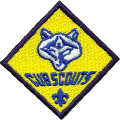
.jpg)

